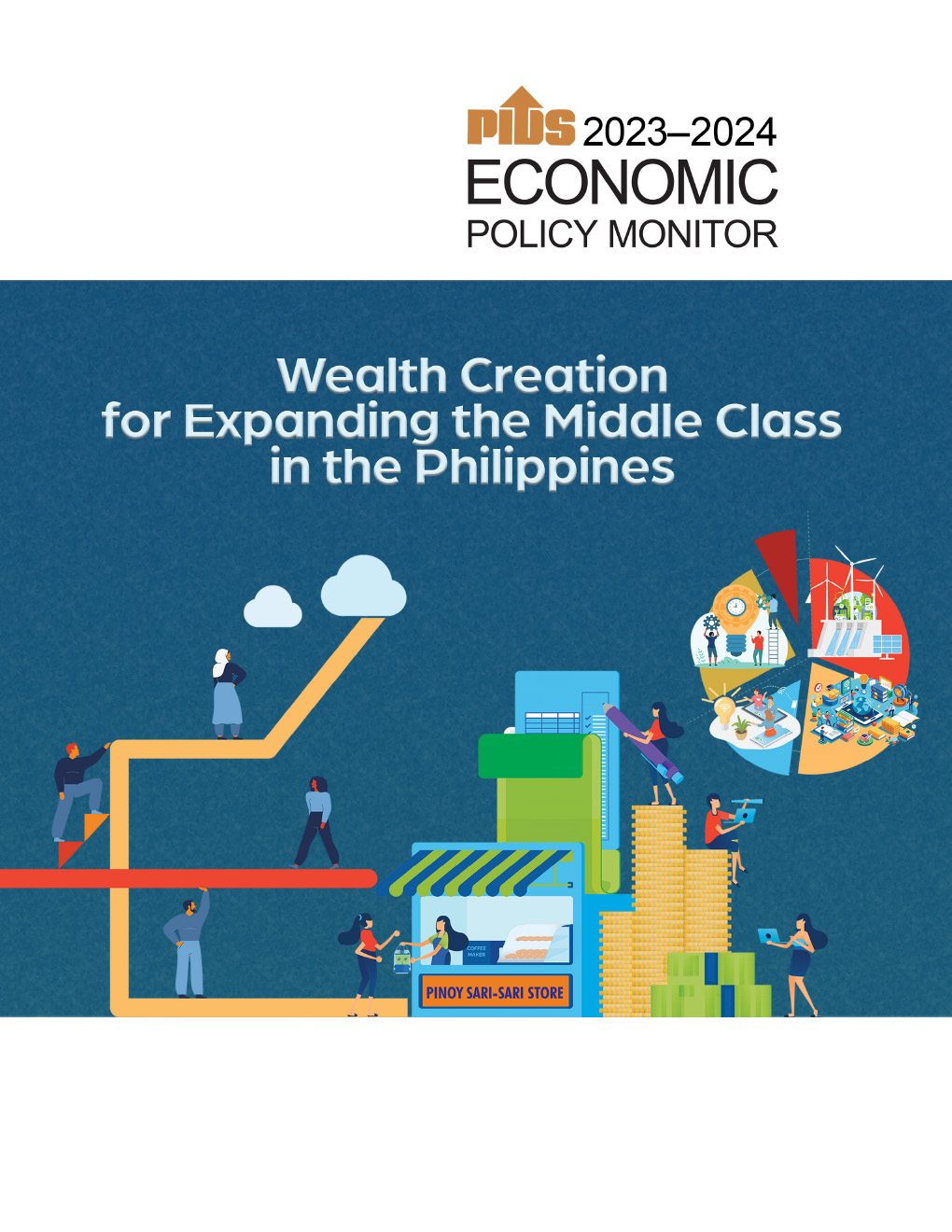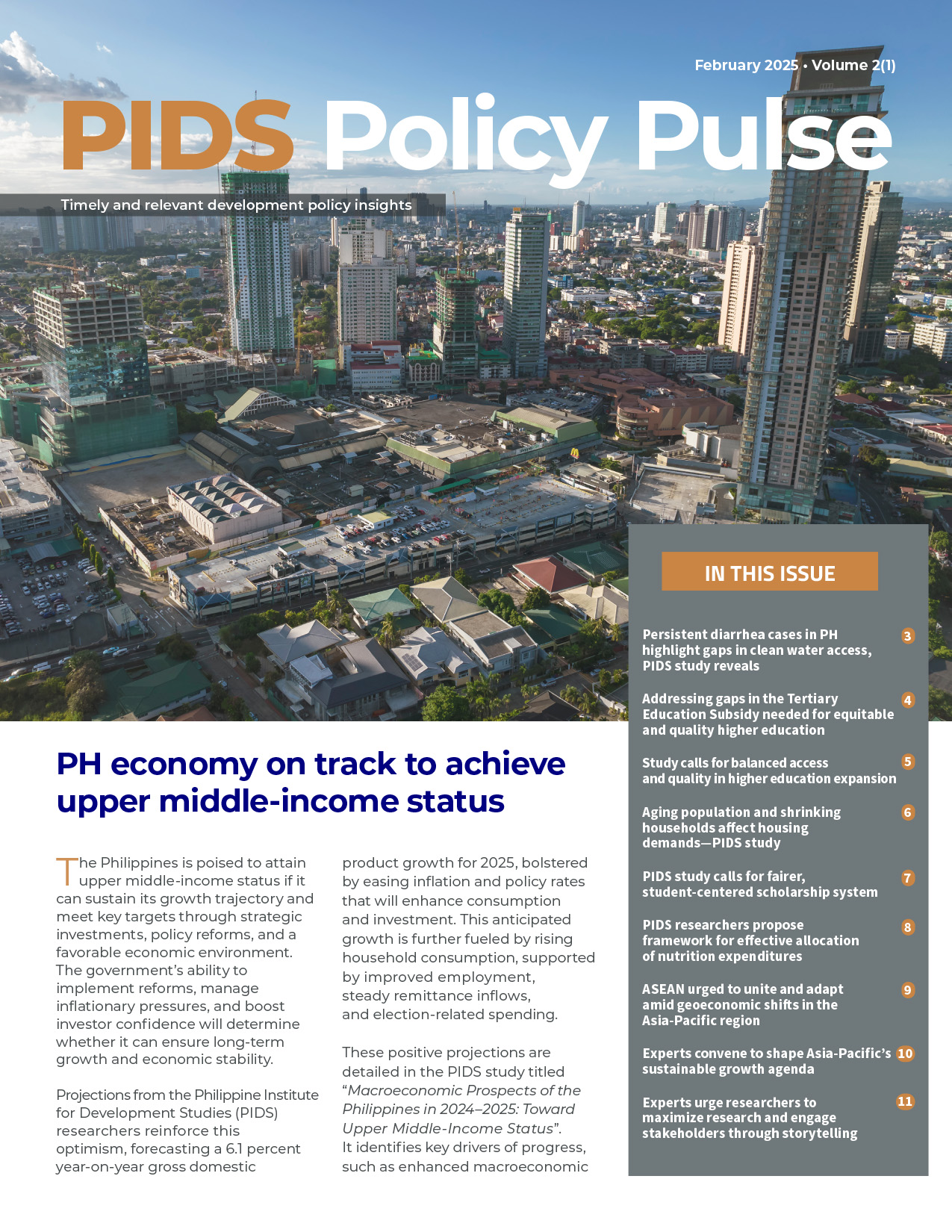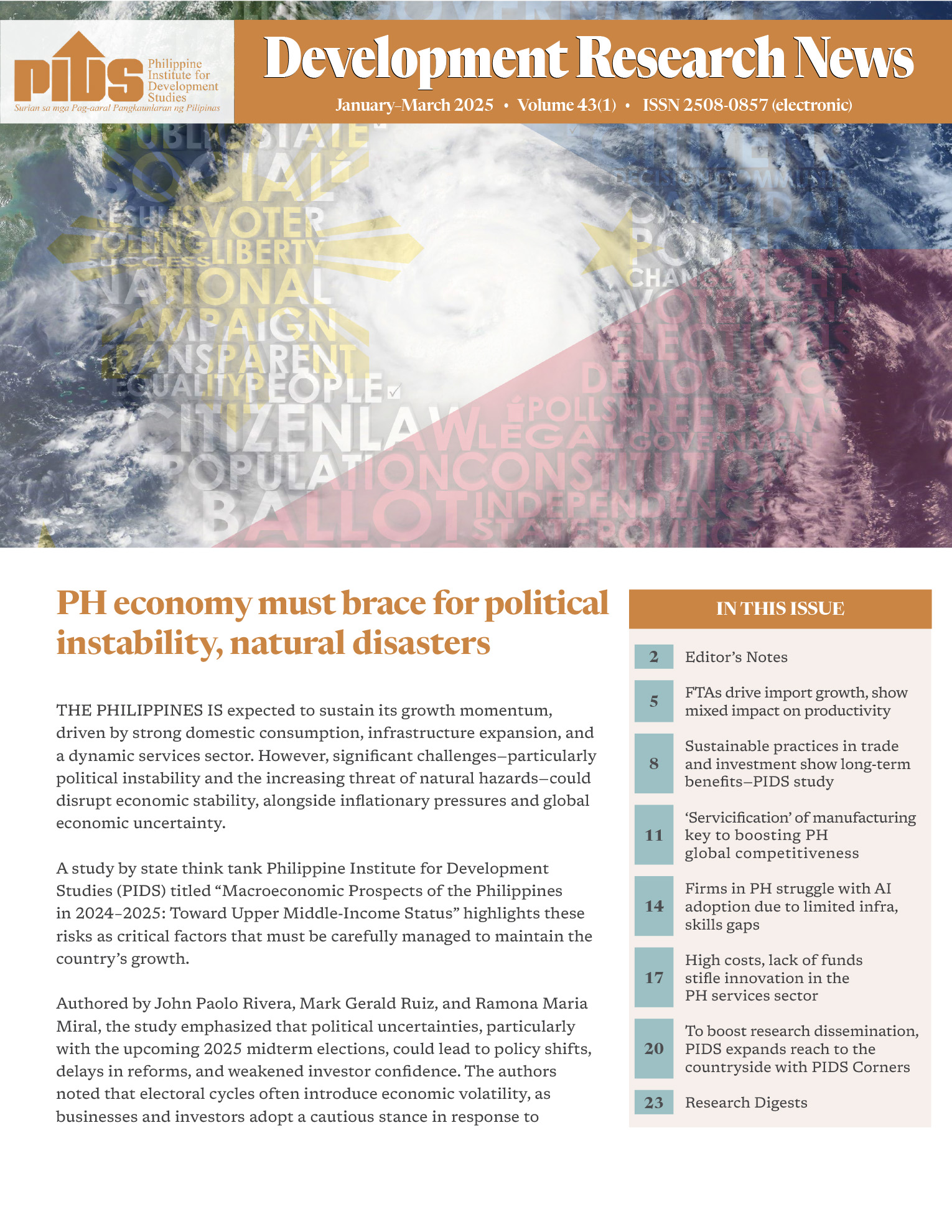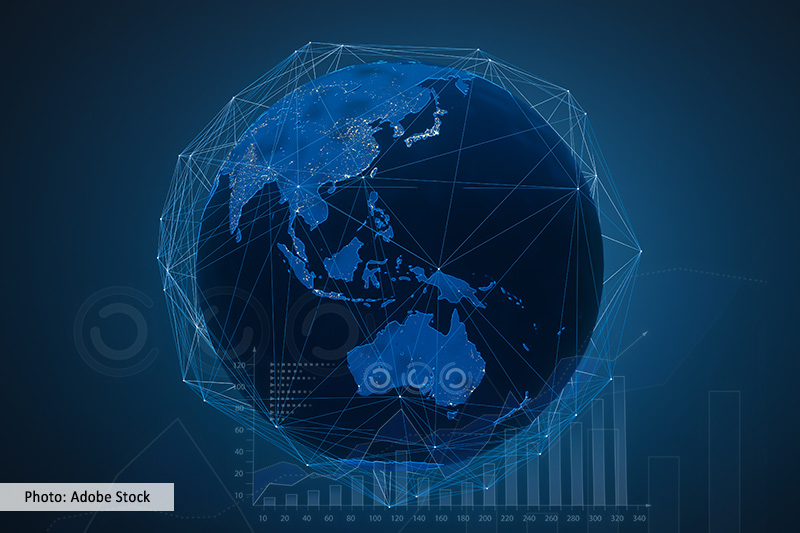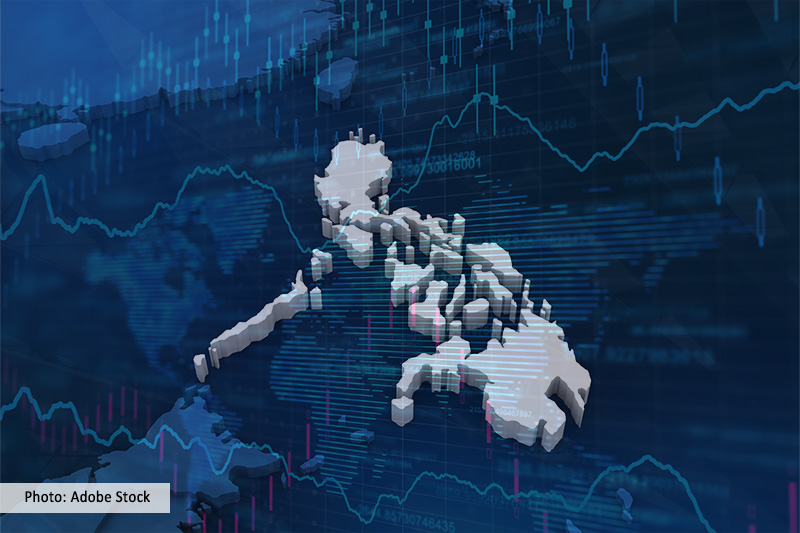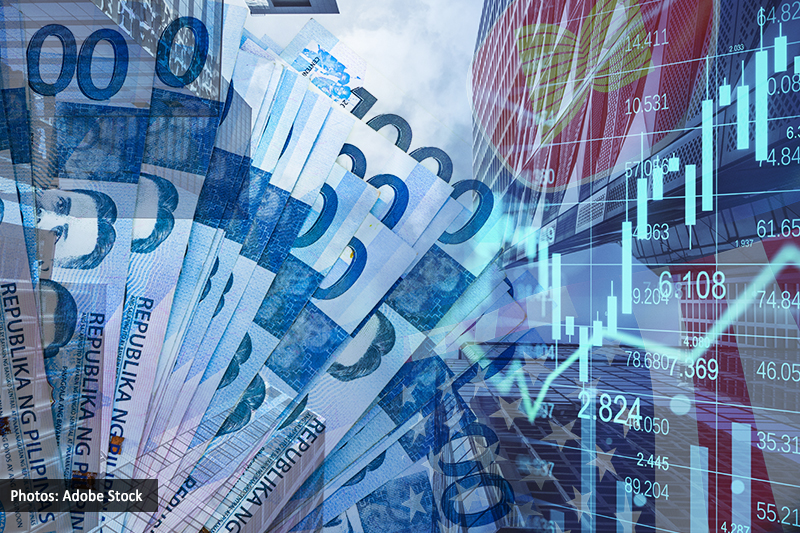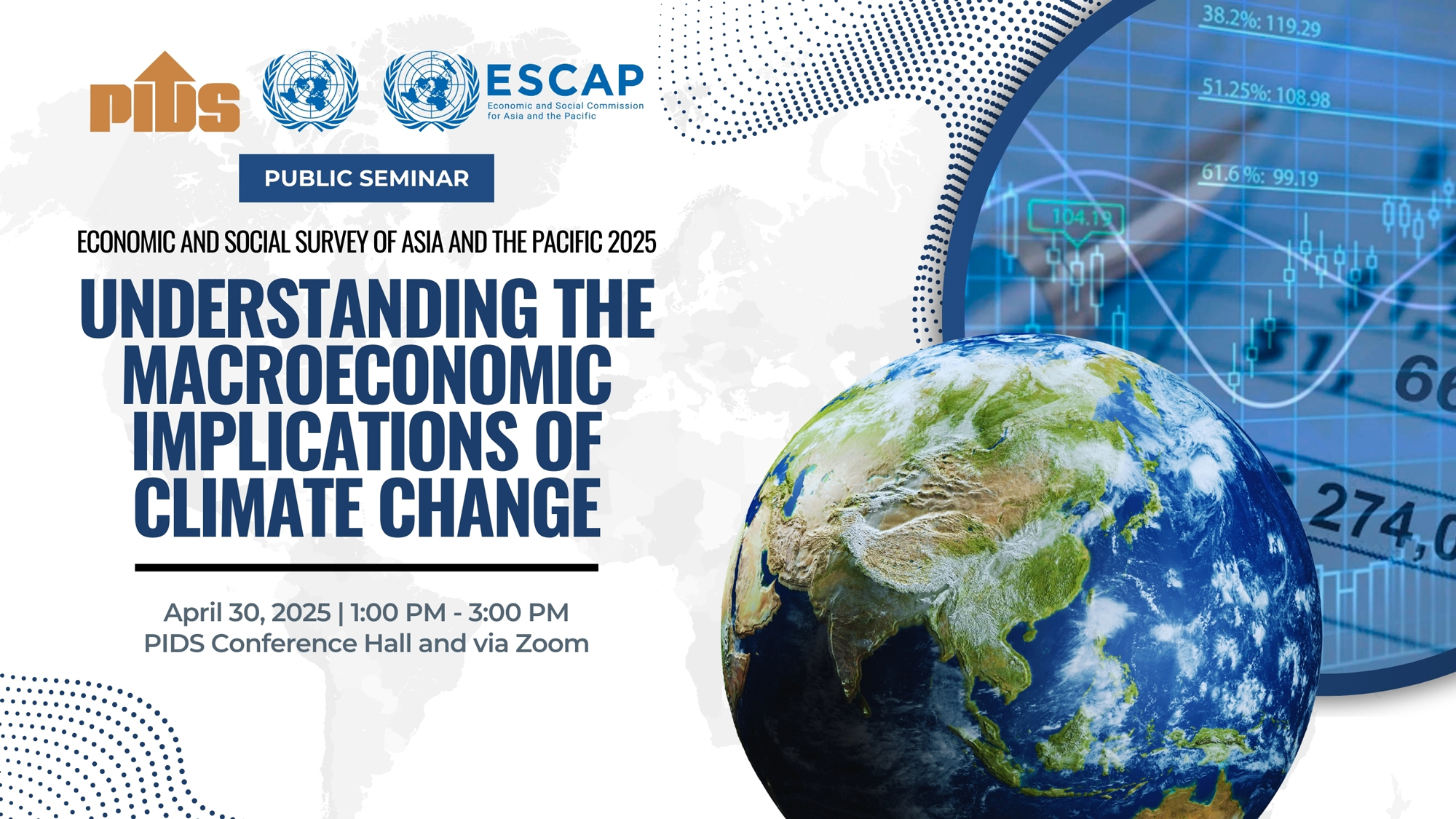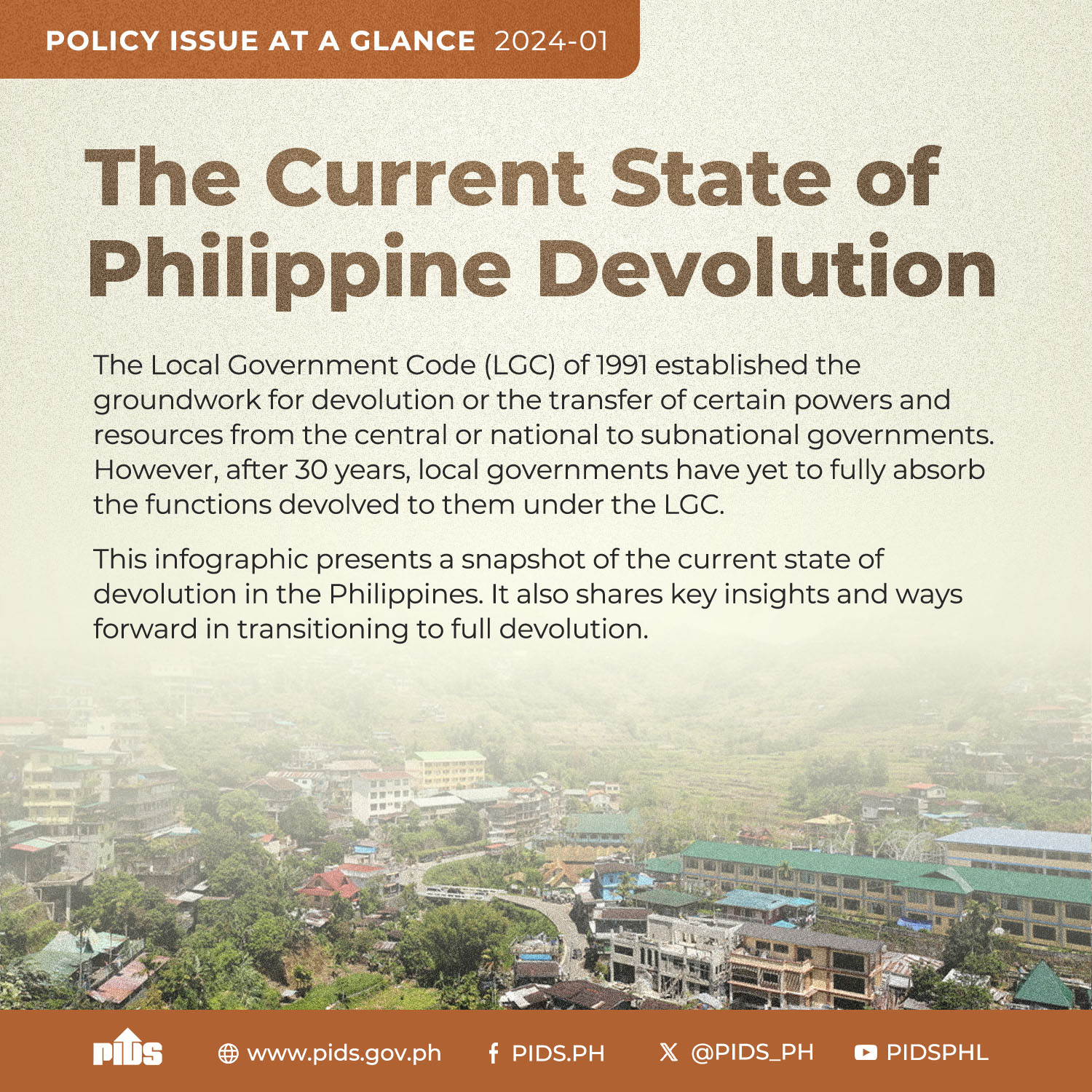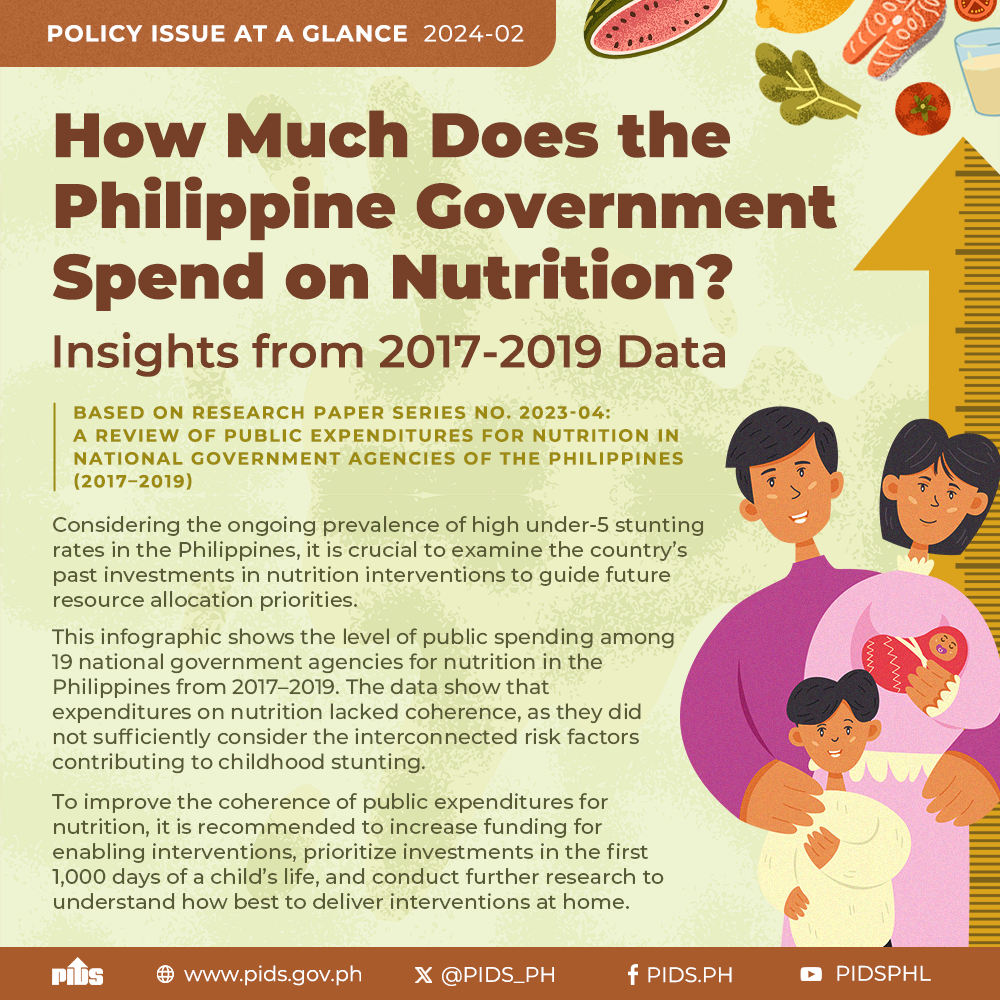The Philippines needs to adopt sound fiscal management measures and adjust its policies to sustain economic growth despite rising global trade tensions, according to an economist.
Security Bank Chief Economist Angelo Taningco warned that a potential trade war could raise import costs, making production more expensive for businesses and push up consumer prices.
“Many leaders around the world are very much cognizant of a looming escalation on tariffs and a potential date for that tariff retaliation,” Taningco said during a webinar on macroeconomic prospects.
He added that as a net importer, the Philippines remains vulnerable to rising import costs, which could put pressure on businesses and households.
Data from the Philippine Statistics Authority (PSA) showed that the country’s trade gap grew 16.9 percent in January, reaching $5.09 billion from $4.35 billion a year ago. This is a reversal of the 21.9-percent decline recorded in January 2024.
However, the trade deficit by end-December expanded by 1 percent to $54.21 billion, from $52.59 billion the previous year.
Import payments rose 10.8 percent to $11.45 billion in January, rebounding from consecutive decreases of 1.5 percent in December 2024 and 6 percent in January last year.
Tracking volatility
Former Philippine Institute for Development Studies (PIDS) researcher John Paul Corpus highlighted the importance of economic modeling in navigating external pressures.
He said tracking fluctuations in oil prices, exchange rates, and government spending helps policymakers assess potential policy responses and their impact on economic recovery.
PIDS Senior Research Fellow John Paulo Rivera added that while the country posted moderate GDP growth in the last quarter of 2024, it lagged behind some Asean neighbors due to persistent inflation, high borrowing costs and weak external demand.
The Philippine economy grew by 5.2 percent in Q4 2024, matching the previous quarter’s pace, according to the PSA. This brought full-year GDP growth to 5.6 percent, slightly above 2023’s 5.5 percent. (See: https://businessmirror.com.ph/2025/01/30/q4-gdp-growth-at-5-2-as-typhoon-battered-farm-sector-shrinks/)
“While the Philippines’s growth was still higher than Thailand and Malaysia, global demand uncertainties weighed more heavily for the country,” Rivera said.
He noted that coordinated policies at both national and international levels, particularly in trade and investment, would be crucial in sustaining long-term economic expansion.
Meanwhile, SM Investments economist Robert Dan Roces stressed the need for “inclusive” growth, arguing that GDP figures alone do not fully capture economic well-being.
“GDP numbers are like a social media profile as they do not really tell the whole story. The real question is not just how fast we are growing, but who is benefiting from this growth?” he said. “Are we building an economy that lifts all boats, or just a select few?”
He underscored the role of digital transformation in strengthening economic resilience, reiterating that it should be integrated across all sectors rather than concentrated in specific industries.

